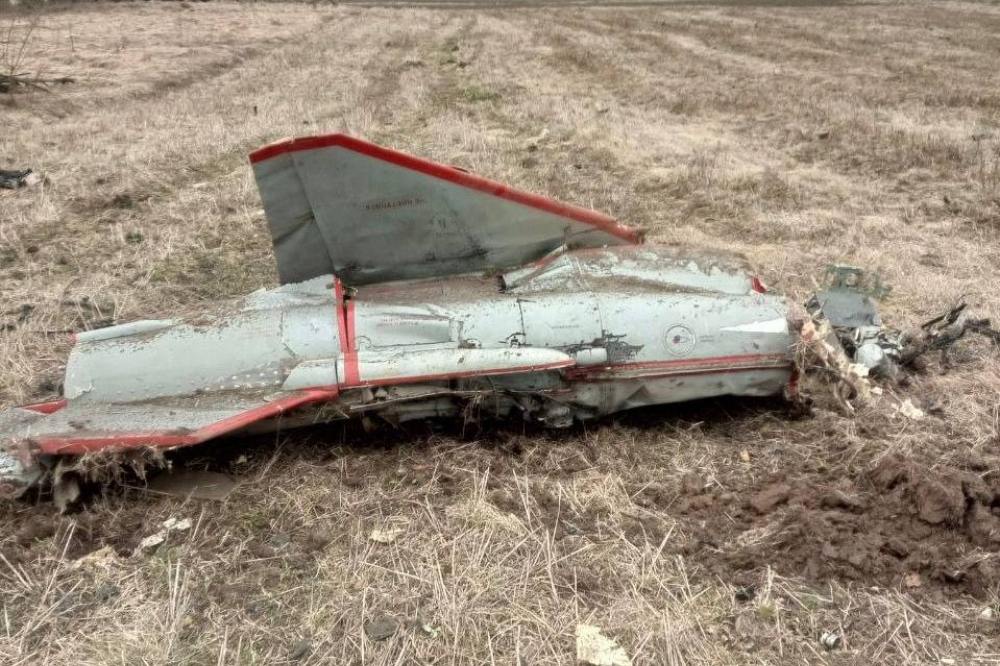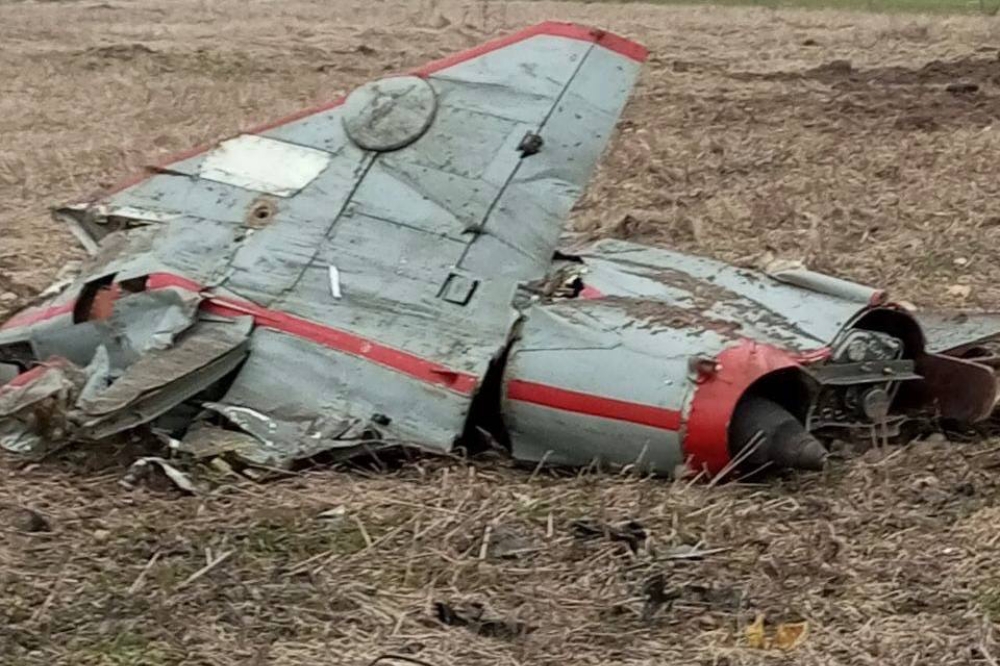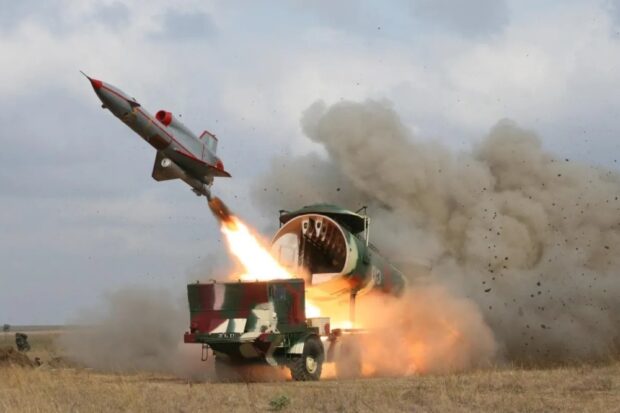Ukraine is reaching deeper into its stocks of Cold War-vintage leftovers to find weapons—any weapons—that can strike military and industrial targets deep inside Russia.
Somewhere, somehow, someone seems to have found an additional batch of 1970s-vintage Tupolev Tu-141/143 drones—crude, hulking but nevertheless potentially effective vehicles that the Ukrainians last deployed a year ago, four decades after they initially retired from Soviet service.
Social-media users highlighted recent photos apparently depicting the wreckage of a Tu-143 in Russia’s Bryansk Oblast, just north of Ukraine. It seems the drone was part of Ukraine’s ongoing deep-strike campaign targeting Russian infrastructure—including oil facilities—in regions near Ukraine.

The remains of a Soviet-originated Tu-143 unmanned reconnaissance aircraft (modified into attack drone) launched by Ukraine were found in Bryansk Oblast of Russia
As developments of the first-generation recon drones that the U.S. Air Force deployed in the Vietnam War, the jet-propelled Tu-141 and similar Tu-143 aren’t very sophisticated.
But they’re simple, speedy and—at seven tons and 47 feet of length—big enough to haul a warhead weighing hundreds of pounds. That makes them much more destructive than, say, a Ukrainian clone of a 440-pound Russian Shahed drone.
The Tu-141/143 works. So it should come as no surprise that the Ukrainians are sending the drones on one-way missions to, it seems, blow up Russian oil refineries.
Drones have been around since World War I. The first models were radio-controlled targets for gunnery practice. In the 1950s, the U.S. Air Force and California target-maker Ryan Aeronautical developed the Model 147, a 30-foot-long, jet-propelled drone with what was, for the time, a highly-sophisticated inertial navigation system and a nose full of expensive cameras.
Model 147s flew thousands of missions over Vietnam, shooting photos of targets for manned bombers later to strike. Armed versions were in development when the war ended and the Model 147 program came to an abrupt end.
The Soviet air force soon developed similar drones. The Tu-141/143 first flew in 1974. Tupolev built 142 copies of the 47-foot-long, ramp-launched Tu-141 at its factory in Kharkiv, in eastern Ukraine. The type served until 1989.

The remains of a Soviet-originated Tu-143 unmanned reconnaissance aircraft (modified into attack drone) launched by Ukraine were found in Bryansk Oblast of Russia
Some Tu-141s and Tu-143s were in storage in Ukraine when Russian troops first invaded the country back in 2014. Ukrainian technicians began pulling the aged drones from warehouses and reconditioning them. Russian-backed separatists shot down at least two Tu-143s over eastern Ukraine in 2014.
The Ukrainian air force operates a handful of manned Sukhoi Su-24 bombers firing 190-mile-range Storm Shadow and SCALP-EG cruise missiles, but the missiles are in short supply and the bombers are too valuable to risk on dangerous raids hundreds of miles inside Russian territory.
The Tu-141/143 is an obvious substitute. It’s fast—600 miles per hour—and, if it’s anything like the Model 147, can fly as high as 20,000 feet or as low as treetop height. Its inertial navigation system can keep it within a few miles of its planned course over a distance of more than a thousand miles. It recovers by cutting its engine and popping a parachute.
Remove the cameras and add explosives, and the Tu-141/143 becomes a cruise missile rather than a recon drone. It was apparent as early as March 2022 that the Ukrainian air force had modified some of its Tu-141/143s for one-way missions. A Tu-141 that went off course and crashed in Croatia on March 10 that year reportedly had a bomb aboard.
The Ukrainians that summer sent at least two Tu-143s on raids in or near Kursk, in western Russia, 50 miles from Ukraine. Russian air-defenses shot down both drones. On Dec. 5 2022, the drones finally got through—and struck two Russian bomber bases 300 miles inside Russia.
Two months later Ukraine expended what, at the time, appeared to be its last flyable Tu-141/143. In all, 14 Tu-141s and Tu-143s crashed or were shot down in the first year of Russia’s wider war on Ukraine.
The Tu-141 that crashed in February 2023 actually wasn’t the last flyable example, as the recent raid proves. It’s as hard now as it was a year ago to how many Tu-141s and Tu-143s Ukraine has left. If any remain, expect more deep strikes targeting Russian industry in the border oblasts.
Top Photo: A Ukrainian Tu-143. WIKIMEDIA COMMONS
Source: Forbes

